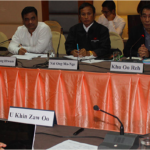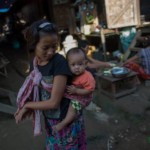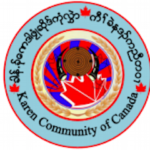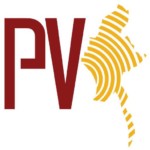Sai Wansai/Shan Herald Agency for News | December 5, 2017
Recently, on December 1, a report from Radio Free Asia indicated that the parliament would soon debate and decide upon the designation of 135 ethnic groups categorization on whether to reduce or add up more after consultation with the ethnic nationalities, according to Dr Nyi Nyi, Deputy Director-General Ministry of Labour, Immigration and Population, at the end of the technical advisory in-country board meeting on population census at Thin Ga Ha Hotel, in Nay Pyi Taw.
In this connection, it would be appropriate to go back a little into the historical backdrop concerning population census of the country, as the 135 ethnic groups categorization is the key component to a lot of political consideration and related rights that comes with it.
Background
The 2014 population census was launched by the Ministry of Immigration and Population, together with teams of international analysts from the United Nations Population Fund (UNFPA) and approximately USD 75 million in international grants was spent within a year and a half in organizing the massive data-gathering operation.
The 2014 exercise was said to be Myanmar’s twelfth Western-style population census, according to Jane M. Ferguson, Department of Anthropology, University of Sydney, in her article, “Who’s Counting? Ethnicity, Belonging, and the National Census in Burma/Myanmar”.
She wrote that the British began mapping the territory following the end of the first Anglo-Burmese war in 1826.
She underpinned her findings, quoting from various sources that “It was not until 1891 that Upper Burma was enumerated, as those territories were annexed five years prior. From 1881, the colonial census repeated once every decade, and censuses from 1901 onwards were more uniform and consistent in their coverage. The final colonial census was in 1941, but results were never completed; during the British evacuation of Burma in 1942, the 1941 census officer fled, leaving behind all of the data save two pages.”
Prior to the 2014 population census, the military regime – Burma Socialist Programme Party (BSPP) had conducted two censuses in 1973 and 1983.
In 1982, the Burmese citizenship law was promulgated, stating that the 135 recognized ethnic groups are entitled to automatic citizenship as the indigenous peoples (Taing Yin Tha) of the country.
And even though the idea of categorizing the ethnic composition from eight major ethnic groups into 135 ethnic groups was already present, the 1983 census didn’t make use of the ethnic coding. But the 2014 census made this ethnic coding one of the centerpieces of the whole undertaking.
“The survey calls for participants to identify themselves with one major race (one of the eight national races) as well as ones sub-group (of the official 135 ethnic groups), though it does have an ‘other’ option (code number 914), where the respondent can write in the name of her or his ethnic group,” according to Jane M. Ferguson.
135 ethnic groups and actual count
Originally, there are just eight major ethnic groups – Kachin, Kayah, Karen, Chin, Bamar, Mon, Rakhine and Shan – recognized. But since 1991 the diversification idea of 135 ethnic groups was already floated by the military government, which was made official by the government in 2014 census to be included in determining the ethnicity of the respondents.
They could again be divided again as follows: Kachin comprises 12 ; Kayah 9; Karen 11; Chin 53; Bamar 9; Mon 1; Rakhine 7; and Shan 33 different ethnic groups, totaling 135.
But thorough investigation by a keen observer Gamanii, in his analysis, “135: Counting Races in Burma” in SHAN on 25 September 2012, puts the figure down to Kachin 6; Kayah 5; Karen 3; Chin 11; Bamar 6; Mon1; Rakhine (Arakan) 5; and Shan 22 different ethnic groups, with a total of 59.
Inconsistencies
Firstly, the diversification of eight major ethnic groups are flawed, in a number of places.
For example, the categorization puts other separate Burman ethnic groups like “Danu, Taungyo and Intha” among the Shan ethnic groups. It also lists “Kadu and Ganan” separately, and lists as “Phon”, a cousin of Kachins living in Kachin and Shan States, and “Salon or Moken”, a non-Tibeto-Burman Austronesian Malayo-Polynesian among the Burmans, according to Gamanii.
The second inconsistency is depicting clans or dialect differences as separate races or sub-ethnic groups, including the addition of a common denominator to a major ethnic group.
The clans of “Trone and Dalaung” are listed as sub-ethnic groups, although they belong to together to “Rawang”. In the same vein, “Guari, Khakhu, Duleng” are clans which belong to “Jingpho”.
Apart from that, “Kachin” a common denominator for “Jingpho, Maru, Rawang, Lashi, Atsi and Lisu” is used and added as a separate tag under the category of Kachin.
The third flaw is repeating the same group with a different name, like “Shan Gyi” and “Tai-Lon” are different names of the same ethnic group. “Shan Gale” and “Tai-Lay” are also the same.
Perhaps the highly inflated count of 53 that is under category of Chin ethnic group is worth emphasizing. Chin ethnic groups acknowledged by Chin political parties and scholars today said the total to be only eight, as the list displays clans or dialects which are not separate races, tribes or sub-ethnic groups.
The same case has been made for the Karen ethnic group, with the government scheme placing the number of sub-groups as nine, but Karen leaders saying that there are five.
Outlook and suggestion
It is now high time and appropriate to tackle the controversial ethnic count in the parliament and make it public that has been delayed time and again. But would do the government good, if it would consider the following points and come up with a believable and convincing solution so that the ethnic stakeholders involved would be ready to cooperate.
Firstly, the angst that the government expansion of sub-ethnic groups would dilute the ethnic nationalities’ ethno-nationalism, particularly the 8 major ethnic groups, and empowers the Burman or Bamar majority and could they be at disadvantage politically.
Many ethnic main groups see the large number of inflated sub-groups recognition as having a potential in ‘alienating and breaking up ethnic national identity’, to borrow the phrase of Jane M. Ferguson. In other words, the de-ethnization of the main ethnic groups into newly created numerous sub-ethnic identities only muddied the political waters more, although this does not mean that certain sub-ethnic groups desiring to be evaluated to a separate ethnic identity should be blocked; for example in addressing the ethno-nationalism upsurge among the Wa, Palaung, Pa-O and so on.
Secondly, the government should sought to depoliticize the ethnic categorization and shows that it is mainly for statistical exercise for developmental purpose without political ambition to insert supremacy on the other ethnic nationalities as a Bamar major ethnic group.
And finally, it should consider on how the left out ethnic groups, intentionally or otherwise, could be integrated to make the country all-inclusive and all-encompassing.
This article originally appeared on Shan Herald Agency for News on December 5, 2017







